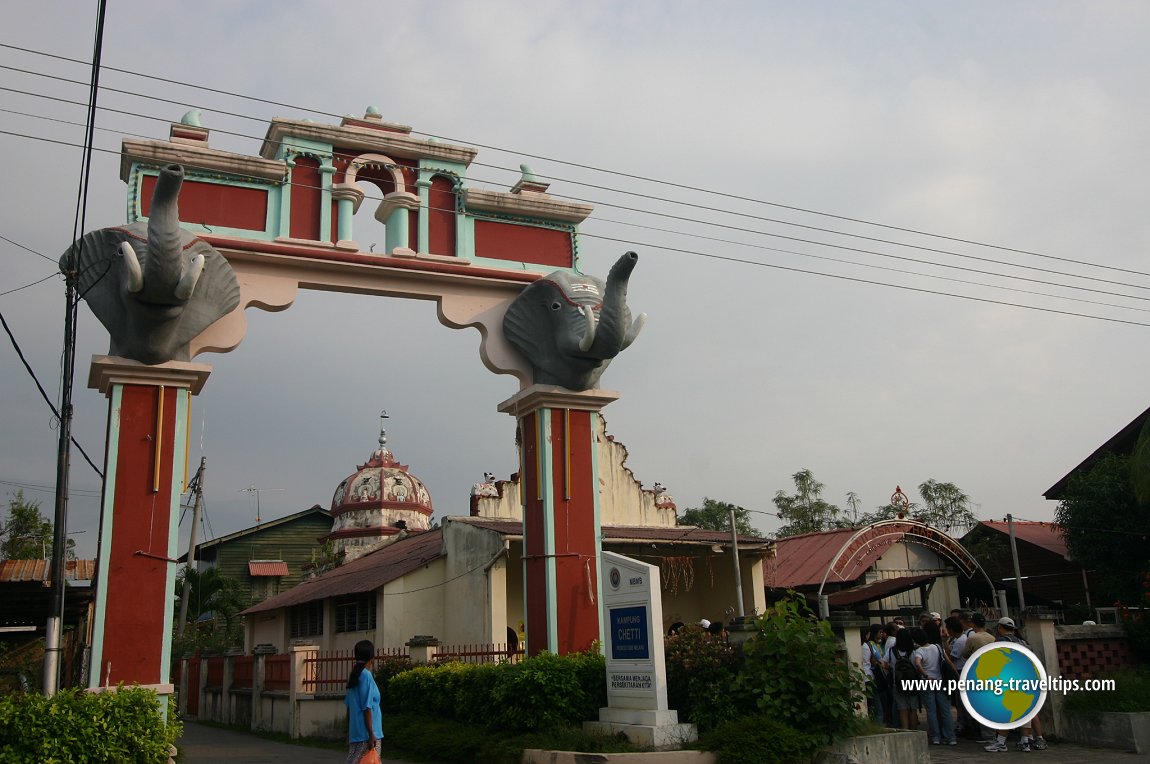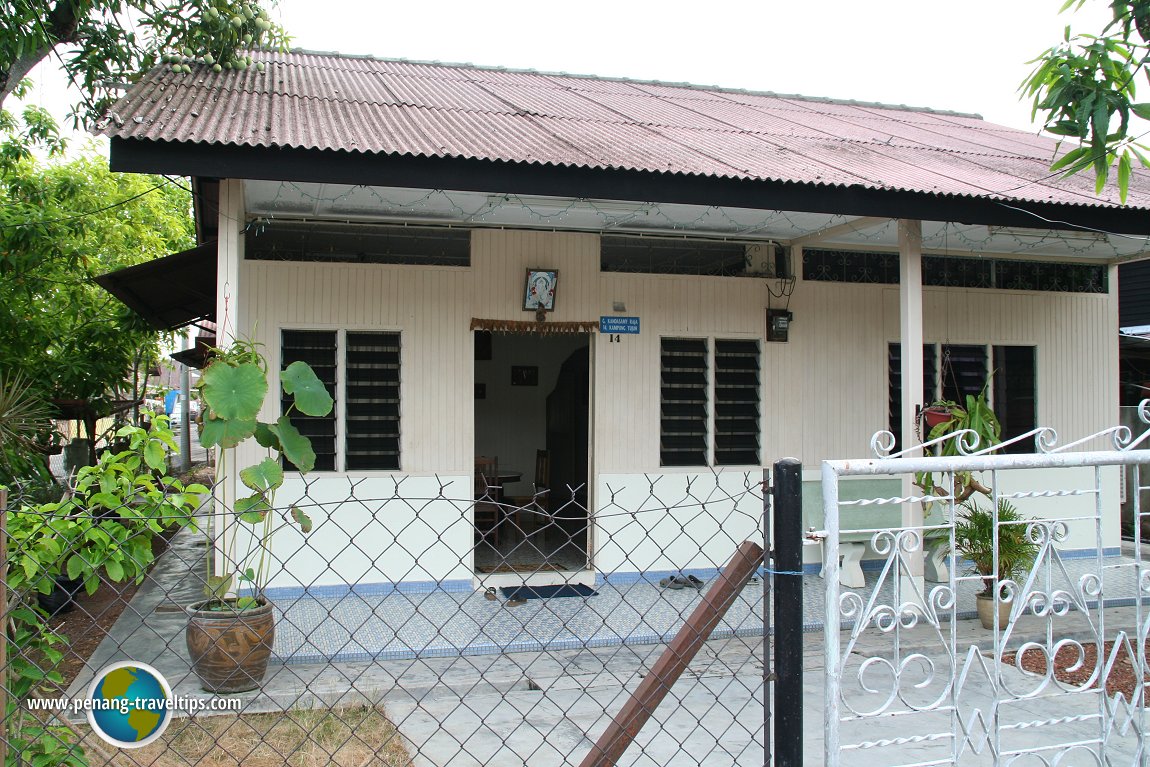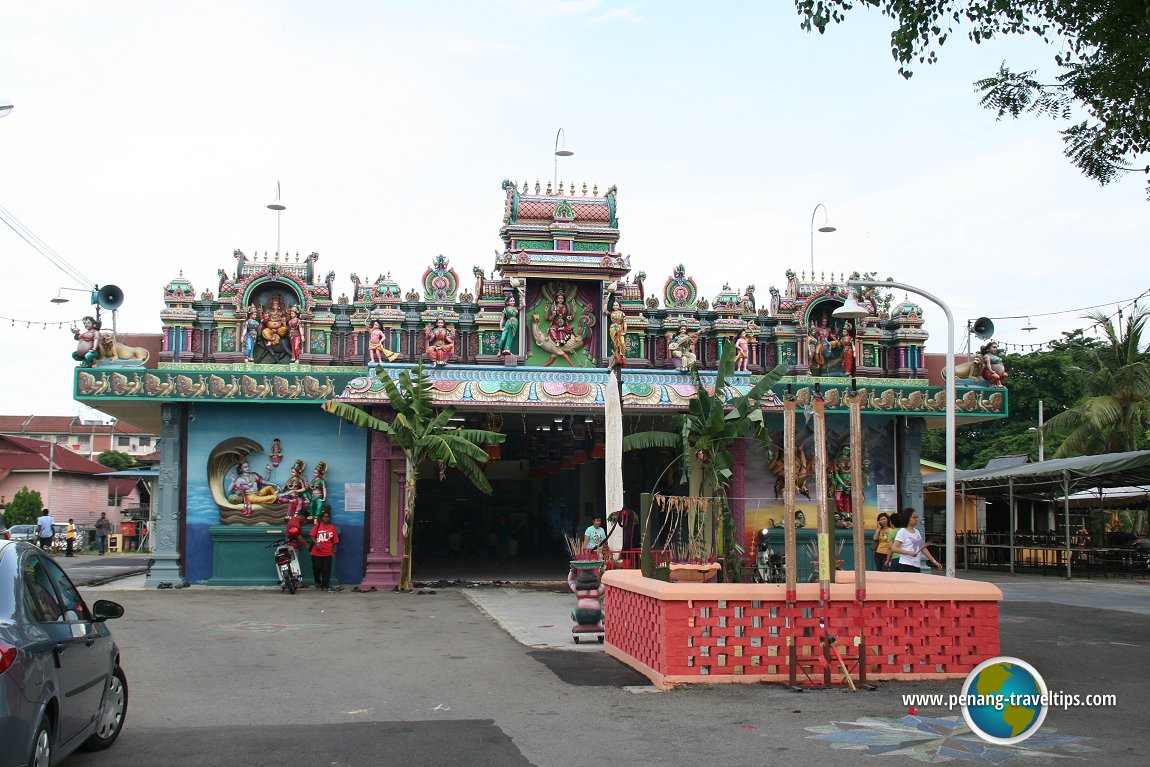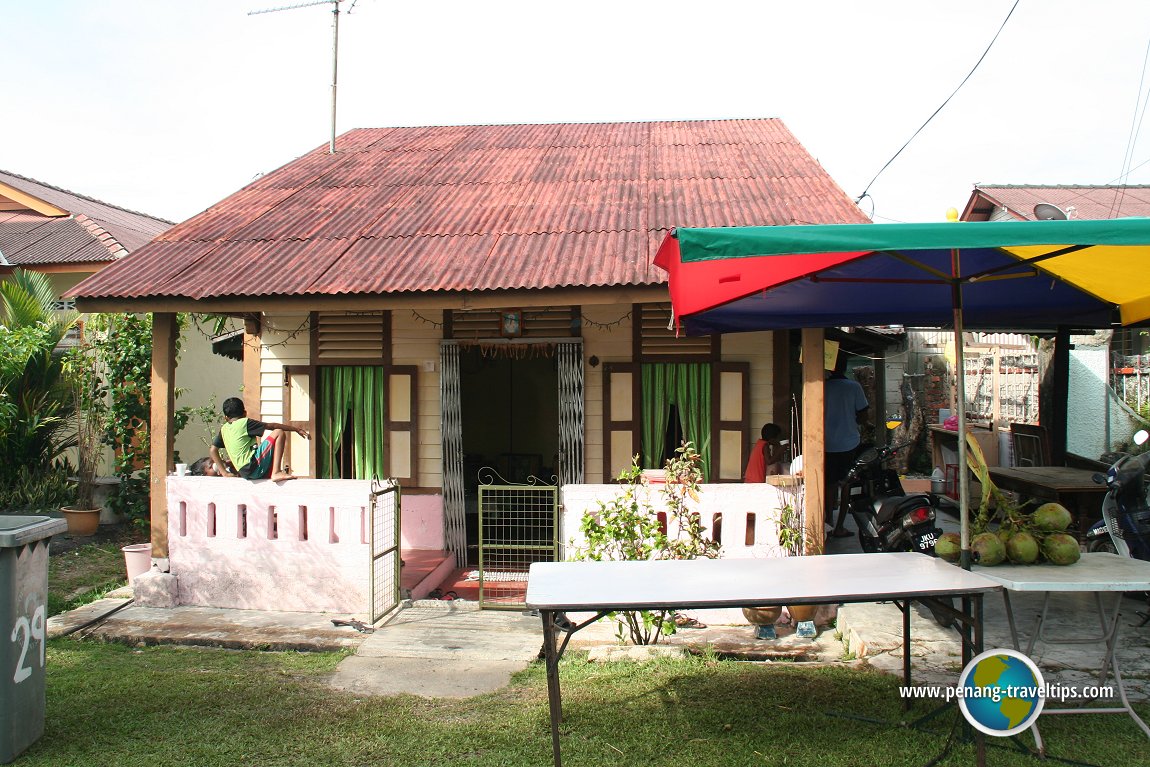 Chitty Village, Malacca (10 July, 2005)
Chitty Village, Malacca (10 July, 2005)
The Chitty Village (GPS: 2.20353, 102.2413) refers to the Chitty community of Kampung Gajah Berang. It is one of the few (probably only) village of Indian Peranakan, or Chitty, in Malacca.
The Chitty should not be confused with the Chettiar community. While the Chettiars are moneylenders by trade, the Chittys are traders who arrived in Malacca in the 14th century. After 600 years of living in this country, the community has adopted many local customs to create a culture which is uniquely theirs. Indeed, the Chitty community is regarded as the oldest Peranakan community in Malaysia, older than the Baba Nyonya Peranakan of the Chinese.
Map of Chitty Village, Melaka
Sights in the Chitty Village
- Angalaa Parameswari Kovil Temple (GPS: 2.20389, 102.24064)

- Chitty Museum (GPS: 2.20373, 102.24149)

- Sri Kailasanathar Temple (GPS: 2.20373, 102.24142)

- Sri Muthu Mariamman Temple (GPS: 2.20432, 102.23939)

The Chittys are Indian traders who came from the southern part of India, namely Kalinga in the Coromandel Coast, during the days of the spice trade. Many married local women, embracing the local cultures and languages while retaining their own religion, Hinduism.
Seafaring Chitty traders settled down in many parts of Malacca where they took on farming. Today the majority live in Kampung Tujung in the Gajah Berang district northwest of Malacca city centre. The community consists of 19 homes and three temples. There is also a newly constructed museum.
When many of the Chittys married and settled in Malacca, they did not maintain contact with their families in India. So it is now impossible for them to trace their relatives in Kalinga. With their ties to India permanently severed, the Chittys fodge a new identity in their adopted homeland.
 House in the Chitty Village (2 May, 2009)
House in the Chitty Village (2 May, 2009)
Nowadays the Chitty village of malacca receives quite a number of visitors, particularly during weekends, peopole who are curious to learn about this community. According to Mr K. Nadarajan Raja, the secretary of the Cultural Society of Chitty Malacca, although the Chittys are Indian, most have adopted using Malay, and today speak Tamil only haltingly. Their dressing is also different from their counterparts in India, and gives an indication of how they have integrated with the local society. Chitty women usually wear the kebaya panjang or kebaya pendek, depending on their marital status, with a sarong. The handkerchief or binpoh is worn on the shoulder like a shawl.
The men's dressing, when they are not in modern attire, is closer to the Indians. They are wear a dhoti and shirt for religious functions, while for traditional events, they would wear the sarong or kain pelekat with the lose Nehru jacket and cap. A piece of colourful cloth is often draped on the left shoulder.
 Sri Muthu Mariamman Temple in the Chitty Village (2 May, 2009)
Sri Muthu Mariamman Temple in the Chitty Village (2 May, 2009)
As for festivals, the Chittys celebrate all three days of ponggol, the harvest festival in January, and Deepavali on a grand scale. Temple festivals are also celebrated by following a strict vegetarian diet for 10 days during which the Chittys living elsewhere in the country, congregate in Malacca for the celebrations.
One festival celebrated with much ado is the Bhogi Parachu, usually falling in January. Chittys make offerings to ancestors on this day. Chitty delicacies such as pulut tekan/nasi lemak, ginggang and other homemade specials are served then. On this occasion, nasi lemak is patted down onto banana leaves and salted eggs are embedded in the centre along with raddish. Some 13 other dishes such as friend mutton and chicken, soup and sweets are also placed on the banana leaves.
"This is one festival celebrated in every household in the village. Ancestral worship is very important to us because we want the blessings of our forefathers," says Nadarajan. "It is also a time when everyone in the village visits one another."
 Another house in the Chitty Village (2 May, 2009)
Another house in the Chitty Village (2 May, 2009)
Chilly Village is  on the Map of Malacca
on the Map of Malacca
Discover Malacca; list of villages in Malacca and villages in Malaysia
 Map of Roads in Malacca
Map of Roads in Malacca
 Latest updates on Penang Travel Tips
Latest updates on Penang Travel Tips

Copyright © 2003-2025 Timothy Tye. All Rights Reserved.

 Go Back
Go Back